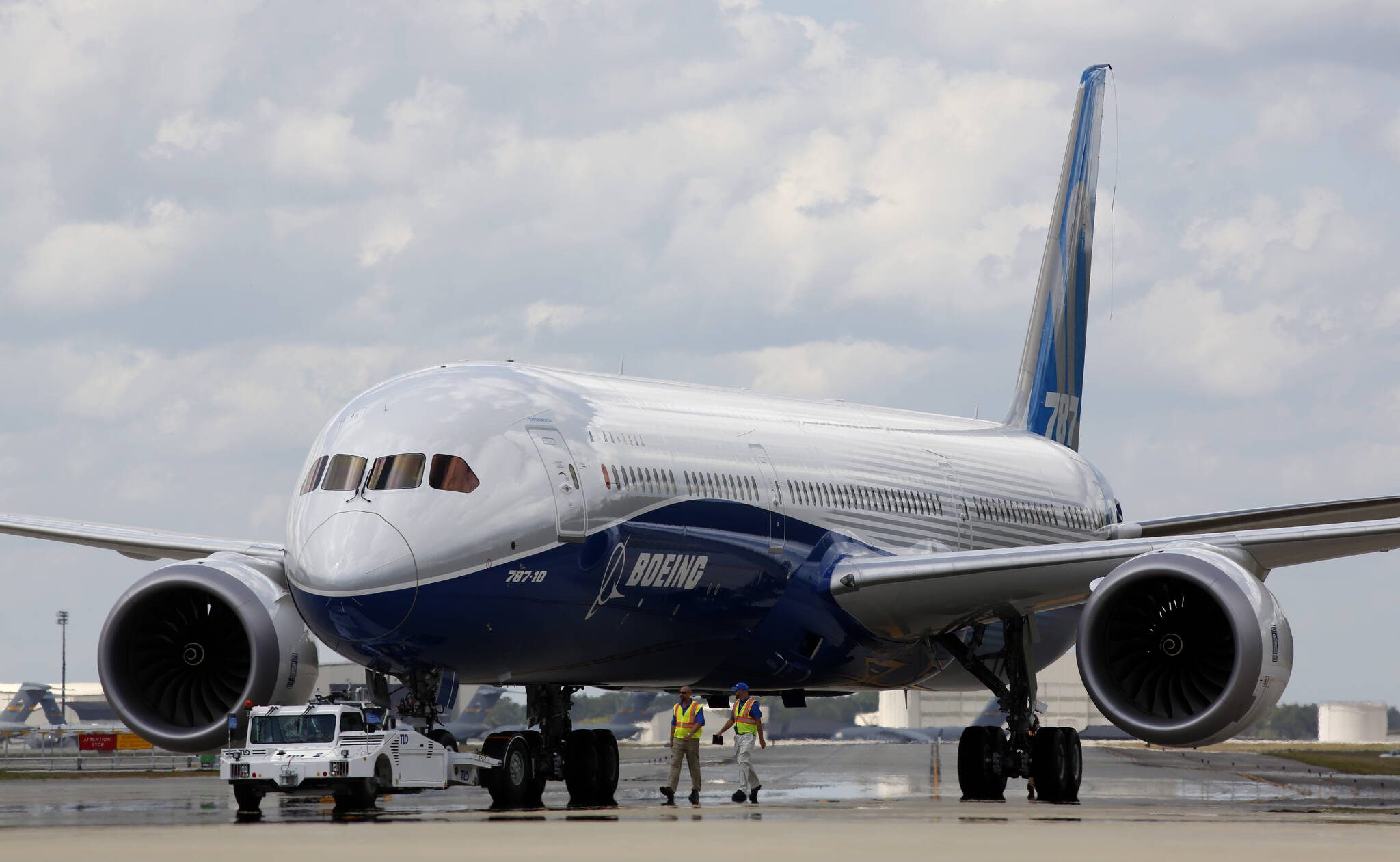By David Koenig / The Associated Press
Boeing is defending the integrity of the fuselages on two of its largest planes, which have come under criticism from a whistleblower who warns that panels on the outside of one of the planes could eventually break apart during flight.
Two Boeing engineering executives went into detail Monday to describe how panels are fitted together, particularly on the 787 Dreamliner. They suggested the 787’s carbon-composite skin is nearly impervious to metal fatigue that weakens conventional aluminum fuselages.
Their comments during a lengthy media briefing served as both a response to news reports last week about the whistleblower’s allegations and a preemptive strike before he testifies to a congressional panel Wednesday.
The whistleblower, Everett-based Boeing engineer Sam Salehpour, said excessive force was applied to fit panels together on the 787 assembly line, raising the risk of fatigue or microscopic cracking in the material that could cause it break apart.
The Boeing officials described how sections of a fuselage are brought together, shims are added to fill gaps, holes are drilled and cleaned, and fasteners attached to apply “pull-up force” that 99% of the time results in margins of .005 inches or less between panels. A gap problem was discovered in 2019 between two panels, which led to design and assembly changes, they said.
Boeing conducted testing replicating 165,000 flights with no findings of fatigue in the composite structure, Steve Chisholm, Boeing’s vice president of structural engineering, said. The average 787 makes 600 flights a year, he said.
The company said planes already in use are proving safe. Chisholm said 671 Dreamliners have undergone the intensive inspections for 6-year-old planes and eight have undergone 12-year inspections with no evidence of fatigue in the composite skins.
Cracks have been found on metallic parts, including a piece above where the wings join the fuselage, and Boeing issued inspection guidelines for those parts, the officials said.
The 787 Dreamliner is a two-aisle plane often used on international flights since its debut in 2011. The composite material makes the plane lighter, contributing to better fuel efficiency.
A series of battery fires briefly grounded the planes. Deliveries of the aircraft have been stopped at times because of questions about fuselage panels, the use of unapproved titanium parts from a supplier in Italy and flaws in a pressure bulkhead.
The Federal Aviation Administration must inspect and approve each 787 that rolls off the assembly line before it can be flown to an airline customer.
The whistleblower Salehpour claims that after he raised safety concerns about the 787, Boeing transferred him to work on an older widebody plane, the 777. He told the Seattle Times that he saw workers jumping on fuselage panels to get them in alignment, which Boeing disputes.
Boeing says it is “fully confident” in both planes.
Salehpour is the latest in a line of Boeing whistleblowers to come forward, often alleging retaliation for raising safety concerns. The company said it encourages employees to speak up about problems.
Lisa Fahl, the vice president of engineering for Boeing airplane programs, said employee reports have “exploded” — with as many reports in January and February as were filed in all of 2023 — “which is what we want.”
Talk to us
> Give us your news tips.
> Send us a letter to the editor.
> More Herald contact information.

























